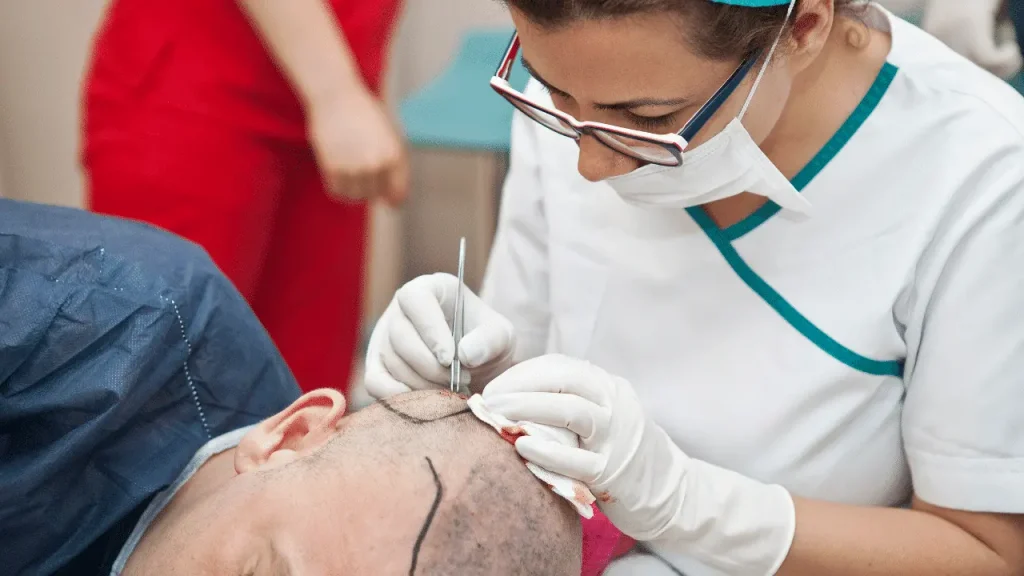Hair transplant surgery is a significant decision for those seeking to address hair loss. One common concern that many individuals have is whether they need to shave their head for the procedure. In this comprehensive guide, we’ll delve into this question, exploring the factors involved and providing insights into what to expect during a hair transplant procedure.
Understanding Hair Transplant Procedures
Before addressing the question of shaving, it’s essential to understand the two primary methods of hair transplant surgery: Follicular Unit Transplantation (FUT) and Follicular Unit Extraction (FUE).
Follicular Unit Transplantation (FUT)
In FUT, a strip of scalp containing hair follicles is surgically removed from the donor area (usually the back or sides of the head), and the donor site is then sutured closed. The harvested strip is then dissected into individual follicular units for transplantation into the recipient area.
Follicular Unit Extraction (FUE)
FUE involves the extraction of individual hair follicles directly from the donor area using a small punch tool. These follicles are then implanted into the recipient area.
Shaving Requirements for Hair Transplant
The need to shave the head largely depends on the hair transplant technique used and the preferences of the surgeon. Let’s explore the shaving requirements for each method:
FUT (Strip Method)
With FUT, shaving the entire head is typically not necessary. Since only a strip of scalp is removed from the donor area, the surrounding hair can often cover the incision site once it’s sutured. However, the donor area where the strip is harvested may need to be trimmed short to facilitate the surgical process.
FUE
In contrast, FUE procedures usually require shaving the entire donor area. This allows the surgeon better visibility and access to the follicles for extraction. Depending on the extent of hair loss and the number of grafts needed, the recipient area may also need to be shaved partially to ensure symmetry during the transplantation process.

Benefits of Shaving for Hair Transplant Surgery
While the idea of shaving the head may initially seem daunting, it’s essential to understand the benefits it offers:
- Improved Precision: Shaving the donor area in FUE allows the surgeon to precisely extract individual follicular units, reducing the risk of transection and maximizing graft survival.
- Easier Graft Placement: A shaved recipient area provides a clean, uniform surface for graft placement, ensuring natural-looking results.
- Faster Recovery: With both the donor and recipient areas shaved, post-operative care becomes more manageable, facilitating healing and minimizing the risk of complications.
Mitigating Concerns About Shaving
Understandably, some individuals may have reservations about shaving their head for a hair transplant. Here are a few points to consider:
- Temporary Discomfort: While shaving is a necessary step for certain procedures, any discomfort experienced is temporary, and the long-term benefits of the surgery often outweigh this short-term inconvenience.
- Consultation with Surgeon: During the initial consultation, discuss your concerns and preferences with your surgeon. They can provide personalized recommendations based on your specific needs and expectations.
- Hair Growth Timeline: Following the procedure, the transplanted hair will shed within the first few weeks before entering a new growth phase. With proper care, you can expect to see noticeable results within several months.
Conclusion
In conclusion, the decision to shave your head for a hair transplant depends on various factors, including the chosen surgical technique and individual preferences. While shaving may be required for certain procedures, it’s essential to weigh the benefits against any concerns you may have. Ultimately, working closely with your surgeon and following their recommendations will help ensure a successful outcome and a renewed sense of confidence in your appearance.
Frequently Asked Questions (FAQs) About Hair Transplant Shaving
Do I Have to Shave My Entire Head for a Hair Transplant?
The need to shave the entire head depends on the hair transplant method used. While FUE procedures typically require shaving, FUT may only necessitate trimming the donor area. Your surgeon will provide specific guidance based on your individual case.
Will Shaving My Head Affect the Final Results of the Hair Transplant?
Shaving the head is often a necessary step to ensure precision during the hair transplant procedure. While it may seem daunting, proper shaving facilitates the surgical process and can contribute to achieving natural-looking results in the long run.
Can I Choose Not to Shave My Head for the Procedure?
In some cases, patients may have the option to minimize shaving depending on their specific needs and the surgeon’s recommendations. However, it’s essential to understand that shaving may optimize the success and aesthetic outcome of the transplant.
How Long Will It Take for My Hair to Grow Back After Shaving for the Procedure?
Following the hair transplant procedure, the shaved areas will begin to regrow hair within a few weeks. While the initial growth may appear sparse, patients can expect gradual improvement over several months as the transplanted follicles establish and mature.
Are There Any Alternatives to Shaving for Hair Transplant Surgery?
While shaving is commonly recommended for certain procedures like FUE, alternative methods such as long-hair FUE or robotic-assisted transplantation may offer options for minimizing shaving. However, it’s essential to discuss these alternatives with your surgeon to determine the most suitable approach for your case.

